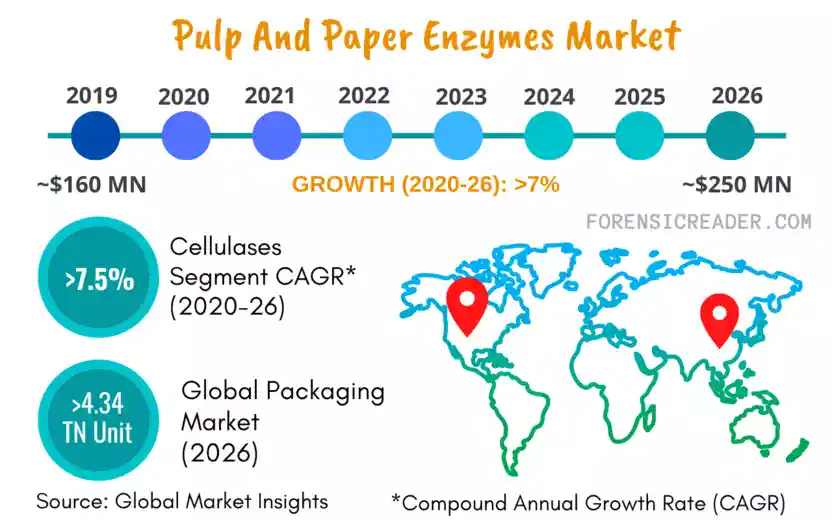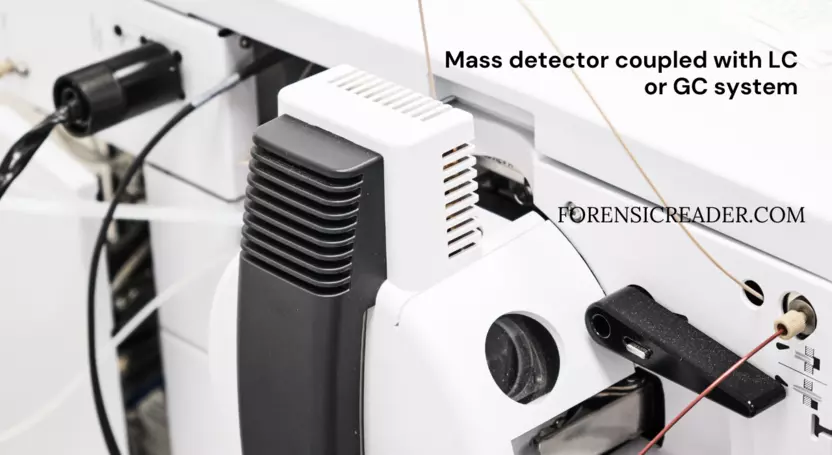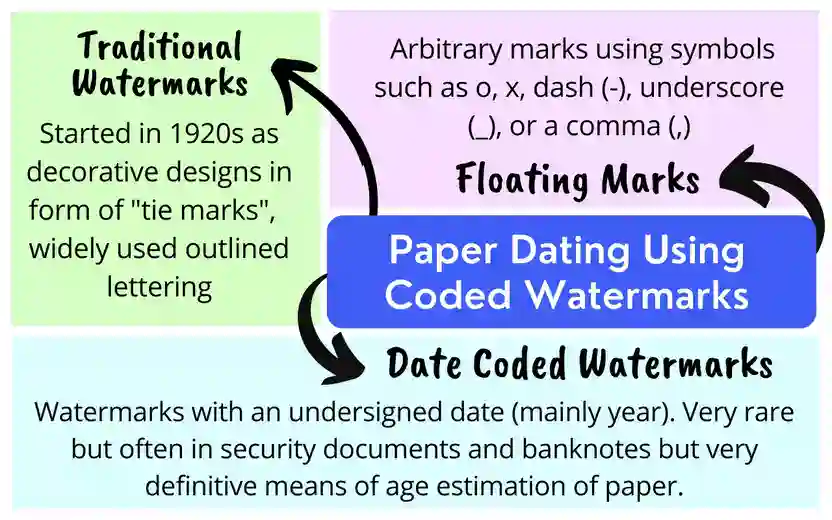You can’t tell how old a piece of paper is just by looking at it. You’ll need an expert eye. And if you ask a Forensic Document Expert (FDE), “Can you tell exactly how old the paper is?”
The most reliable answer is “No one knows.” Some papers have manufactured qualities (eg: banknotes, coded watermarks) that make determining their ages easy. But, for standard documents like office papers, things become challenging.
And technologies like artificial aging make it harder. In addition, if no ink is involved, it cuts the possibility of using ink analysis to determine the age of the questioned document.
Of course, even after performing ink analysis, all of these forensic techniques can only provide a rough guess of the document age. In the court of law, guesswork does not work. But that’s the burden on forensic experts on how they concluded their reports based on legally viable tests and practices.
All of the tests I’m going to mention for paper dating are not something you can do at home. Even if you have a fully equipped laboratory, you are not legally required to make your own reports and believe that your authenticity is unquestionable. That is why you require the services of a Forensic Document Examiner expert.
Want To Determine Age of Paper Document Legally?
You require a service that is reliable, well-known and has previously worked with the United States Government. One of the specialist teams is at SGS ICP Testing. You can even submit the analyzing sample online.
So, the following are the eleven ways how a Forensic Document Expert (FDE) finds the age of the paper document. (click to jump to topic)
1. Identification by Visual Measures
Visual changes and their logs maintained by paper manufacturers can provide standards for comparison when the first changes were made. Changes such as:
- Plain paper: color, size, brightness, weight, and thickness. Read more: How to calculate the brightness of a paper?
- Ruled sheets: space between the margin, two lines, ink color to paint the lines, etc.
- Color Sheets: Different shades, and thickness
- Glossy sheets: Optical Brightness Agents and flossy film.
Apart from this, the “document topic model” can also aid in paper dating revealing an estimated date by comparing it with databases. For example, certain legal jargon, phrases, and mentions, published data on newspapers, magazine covers, could assist investigators to provide a comparison base.
You can know more about the optical changes and how to calculate them in the Optical Analysis section of the Forensic Analysis of Paper.
2. Identifying and Comparing New Additives
Over the course of five years, up to 30% of paper additives were removed or replaced. And this continues to change. The following data from Global Market Insights shows how the pulp industry growing in the next 5 years.

So, by keeping a close eye on what has changed, investigators may be able to determine the relative age of the paper, if the questioned documents were prior to the change. Thus, every time a chemical is added or replaced in the manufacturing process, it increases the possibility of coming up with a date when a particular product batch was first or lastly made.
Let’s assume, a questioned document was analyzed and the result shows that it was bleached by ozone bleaching.
Now as per the following table by Kjell and Paul, ozone bleaching was introduced as early as 1972. Thus, there is no chance a QD from 1968 has ozone bleached characteristics.
| Time Period | Technological Advances |
|---|---|
| Preindustrial | Sunlight potash |
| 1700s | Multi-stage process with lye, sunlight, and lactic acid |
| 1756 | Sulphuric acid shortens the bleaching process |
| 1799 | Introduction of bleaching powder |
| 1920s | Chlorine gas reintroduced as a bleaching agent |
| 1946 | First commercial chlorine dioxide plant opens |
| 1972 | First plant with ozone bleaching started |
| 1990s | Totally chlorine-free bleaching processes introduced |
Similarly, if some technology is replaced or abrupt, this causes the addition or deletion of new additives from paper manufacturing that are a marker for the last date of production.
3. Elemental Changes in Composition
Elemental analysis of the paper is somewhat called to be its fingerprint. It is highly individualistic to manufactures based on the trace composition that was used. Common elements that are present in papered sheets are Li, Na, Mg, Al, Fe, Co, Cu, Zn, Sr, Zr, Ag, Cd, Cr, Ba, Pb, and Th.
Sources of Trace elements in the paper:
- Fillers include pigmentation, sizing material, coating material, soda ash, etc.
- Raw materials at papermaking
- Accidental addition by manufacturing equipments
Following are some technologies (along with first introduced) for determining, comparing, and making an elemental profile of papered documents.
| Year | Technology for Paper Elemental Analysis |
|---|---|
| 1971 | Trace elemental analysis using NAA |
| 1977 | Analysis using Atomic absorption spectrometry |
| 1977 | Determining batch variation of inorganic components by SEM |
| 1978 | Elemental profiles and ratios determined by NAA for paper identification |
| 1994 | Application of Fourier Transform Raman spectroscopy |
| 2002 | Comparison elemental composition of office document papers |
| 2007 | Elemental identification by X-ray fluorescence spectrometry |
| 2012 | Inductively coupled plasma-mass spectrometry (ICP-MS) |

Specifically, the study of 1977 by Polk et.al., states how trace elemental composition can be used for differentiating and identifying the batch variation. [Source]
Thus, by comparing the trace elemental data of questioned sample with known paper manufacturers, a forensic document analyzer can depict the production batch and subsequently the year of manufacturing.
Read More: Identification of Paper Additives: Fillers, Oil, Waxes, and Pigment
4. Using Watermarks on Paper
For paper dating, one can divide watermarks into two categories. One is coded watermarks and the other is uncoded watermarks.

Coded watermarks are the most promising tool when it comes to finding the age of paper. These have distinctive symbols, marking, underlying, or even specific dates of their manufacturing.
On the other hand, uncoded watermarks are simple logos without any sign to reveal their age. These types of watermarks are harder to interpret from paper dating. However, features such as rebranding, changes in logo design, size and placement to the paper, etc, can help an FDE to come up with the relative age of paper.
Further Reading: Paper Dating Using Watermarks: Is It Possible? Let’s Find Out!
5. Paper Dating Using Fiber and Pulp Analysis
Comparing fiber and pulp is primarily employed by any Forensic Document Unit (FDU) to trace down its origin. But, by analyzing the changes and variations in fibers and pulping process, an examiner can even assist in defining how old the paper is.
Fiber analysis is concluded by the combined interpretation of the type of softwood and hardwood. Here, composition and their origin is contributing factor. And for pulping process, its type and more importantly their elemental concentration should be studied, as they vary by some margin in various papered manufacturers.
But here is a drawback to using acid pulp analysis: it promotes a quicker paper degradation than the neutral pulping process.
Read More: Paper Fiber and Pulp Analysis: How They Impact Questioned Documents Examination?
6. How to Know When Document was Printed?
Halder and Garain (Reseachgate), try to come to a new approach in defining the age of printed documents. According to the study, they used an automated system based on assessing the coloring traits and properties that vary as paper ages.
Some of the features that changes alter in colored printed materials are as follows:
- More yellowish and brownish
- Increase in dark noise
- Change in color shade and brightness
- Change in hue and saturation level of ink
The result is interpreted statistically of relevant colors captured by the scanning system. The defined accuracy is ~74.5%. This is not 100% accurate but can assist a possibility of finding the age of printed paper documents.
Similar Research: A Color-Based Model to Determine the Age of Documents for Forensic Purposes [Researchgate]
7. Age Estimation of Typewritten Document
Typewriters are the old things. Most of them are just dust of pieces. Clickable Dead!
Gramercy Typewriter Co, a company of New York City estimated, “There is nearly no customer when it comes to office work. It becomes more like collectible rather than being used.” But still, they are common legal jargon writing tools in some countries. Thus, an office document typewritten papers itself an antique.
You can say that, if a forensic examiner has to come up with dating an office typewritten document, it could be relatively easy than the printed one. Caution: only if reference samples and the typewriter is made available.

So, “Is it possible to determine the age of a typewriter document?” Yes, by analyzing characteristics features such as font, shape, alignment, and arrangement of text, shape, and geometry of text features, a language content analysis could narrow down the search. Plus, wearing-off and tearing of typebars could give a very good estimate of their daily use.
And again FDE needs and relies on cross-referencing samples from typewriter manufacturers to shed light on the date of the document.
Further Reading: Difference between Photocopy and Printed document: Forensic Document Examiner Guide
8. Water Pores Reveal Age of Paper
Interesting research conducted by Missouri et. al. provides a quantitative indicator of the age of a paper document by means of measuring nano-sized water-filled pores of cellulose fiber which degrades and become larger with time by absorbing atmospheric moisture.
For this purpose, Small-Angle Neutron Scattering (SANS) with neutron diffraction is used for calculating the pore radii. A series of samples, ages from 15th to modern papers, were analyzed along with special cases of artificially aged documents.
Here is the main finding of the research:
- Size of water-filled cellulose pores increases as paper ages.
- The mean of water-filled cellulose pore in the Morden papered document: 1.6nm radii.
- The mean of the 15th-century document papers: 2.0nm radii.
- 15th-century paper is 22% larger cellulose radii than 50-year-old paper documents.
A major drawback is harder to define if the age varies even a decade or two.
9. Old Documents Hint Their Age by Aroma
Research published in American Analytical Chemistry Society journal about how aroma can be a distinctive measure to determine the authenticity of papers and books that are older than centuries. [Source]
The research is based on the release of volatile organic compounds (VOCs)— mainly gases— from older documents. The proper term that defines this technique is “material degradomics“. It is a non-destructive technique that doesn’t require altering or damaging any documents.
Research also concluded the close relationship between age and components that affect paper degradation such as rosin and lignin. And when volatile fatty acids degrade it produces mainly acetic and butanoic acid as a result of anaerobic fermentation of starch during the wet-end coating manufacturing process.
Other factors that release VOCs are degradation of carbonyl groups, cellulose polymerization, biocides, and pH. The four main conclusions of the research paper are:
- Production of VOCs during paper degradation
- Composition of papers related to the production of VOCs.
- VOCs determine the extent of degradation and condition of paper
- Define 15 VOCs as markers to track the degradation of paper
Drawbacks of this study: (1) scientists sniff, thus highly depending on whether they scented odor or not. (2) Smell goes away within seconds. (3) Every researcher can’t know and tell the differences between the odor if they don’t have a prior scented the smell.
New Tech: Olfactory Detection Port (ODP) can give a stretch in evaluating the VOCs as odor-active compounds as they elute from a GC column. Furthermore, employing GCMS Static Headspace with Olfactory Detection Port offers more comprehensive results in identifying the VOCs. [Source]
Read More: 14 Myths of Fingerprints And Questioned Documents: A Forensic Study
10. Paper Dating Using Ink Analysis
There are numerous means in how ink analysis help in paper dating. These are as follows:
A. Ink Smears: The amount of ink spread along the paper fibers is a characteristic of how old it was written. Thus, by examining the type of ink, its absorbing factors, and paper features, FDE can define the relative age of the document.
B. Dating using Relative Aging: Mitchell and Kikuchi estimate the age of written documents using fountain pens. Another research by Cantu defined how a relative age of ballpoint ink can help in coming up with the age of the questioned document.
Both the research is based on comparing the absorption of the same written ink on the same paper. Not viable as harder to get comparing reference standard. The more promising result is given by quantifying ink components using GC-MS. [ScienceDirect]
3. Detection Tags: From 1968, the majority of U.S. ink manufacturers start using “INK TAGS” to assist the ATF (Alcohol, Tobacco, and Firearm) Ink Tagging Progam. The samples were obtained with their dates of first manufacturing and documented in the Standard Ink library.
They are majorly made confidential so forensic Document examiner has to deal it with legally. Detecting Tags are analyzed using X-ray Excited Optical Fluorescence Spectrometer (XREOF) that produces have highly selective line emissions.
All the above three methods are very helpful more defining the writing age, and less in paper dating.
11. Can Paper be Carbon Dated?
Carbon dating is promising. It is very finite in finding and depicts a very relative age of the document.
Newer advancements called Accelerator Mass Spectrometry (AMS) produce a very reliable result and don’t require too much sample— 10mg is appropriate. The technology uses accelerating the ions to very high kinetic energies followed by mass analysis.
Drawbacks: (1) Not viable for dating a decade-year paper. But good for a century ago. And Best for the usual historical range. (2) Papers are analyzed majorly for archeological purposes.
General FAQ
What are the common challenges while determining the age of paper documents?
Challenges such as (1) artificial aging mock with real aged doc, (2) manufacturers use an acid pulping process that degrades quicker than neutral ones, (3) high humid environment, (4) how the paper was stored, (5) use of biocides at the manufacturing process
Which is the best method for the best for finding the age of a document paper?
The best means are papers with coded watermarks and security notes that have defining age on the paper.
Continue Reading:
- Paper Dating Using Watermarks: Is It Possible? Forensic Analysis
- Forensic Watermark Examination of Paper: Destructive And Non Destructive Analysis
- Identification of Paper Additives: Fillers, Oil, Waxes, and Pigment
- 21+ Forensic Questioned Document Instruments And Tools With Uses

FR Author Group at ForensicReader is a team of Forensic experts and scholars having B.Sc, M.Sc, or Doctorate( Ph.D.) degrees in Forensic Science. We published on topics on fingerprints, questioned documents, forensic medicine, toxicology, physical evidence, and related case studies. Know More.

I’ve come across a copy of the declaration of independence. I know they made copied three times. 1776, 1876 and 1976. I live in Buffalo, NY and hoping there might be someone close to ke to have the document analyzed to see what century it is from. Any help would be greatly appreciated.
Check the IPS testing website
I have a hand-written copy of a Last Will and Testament, purportedly written in 1727. It has been in my family for generations. I got it from my mother, who got it from her father, and so forth. It has been kept inside an envelope, inside a small box with some other documents, for at least a century. I don’t know when the copy was written. It could have been copied at the time the original Will was written, or it could have been written one hundred-fifty years later, or more. There are three additions to the original Will. The three men who witnessed the signing wrote a short testimony and each one signed it. Then, the Register at the “Court” – which at the time was the Church of Ireland – wrote a short entry officially registering the Will. Then, in 1881, there is an entry made by a man who was the Court Register (civil courts were in place by then), who says he had examined this copy of the Will against the original one on file with the Court and that it was a “true copy thereof.” My question is: how can I determine if this “copy” was written 150 years ago or even 300 years ago? My mother first showed me this document in the late nineteen sixties, when I was a young boy. Thanks for any input.
I suggest you take help from a forensic document expert because you need a certificate of authentication as proof of the original document. The most common test is a comparative ink and paper element composition analysis. Most of the paper and ink manufacturing varies from the time period and any ink and documents made in the 1800s are very different because of manufacturing quality and ink absorption on paper. And again it is only done by document experts.